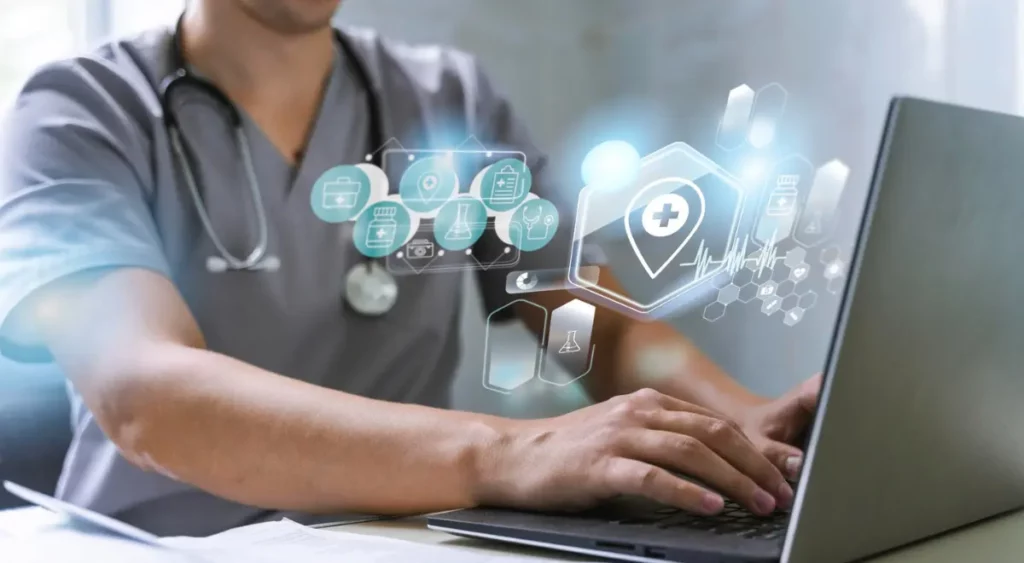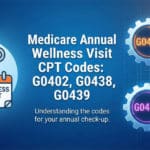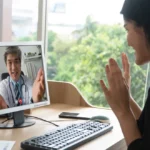Top Remote Patient Monitoring Technologies to Invest in 2025: A Year-End Review

In 2025, the usage of remote patient monitoring (RPM) technology was a huge step forward for the healthcare industry. It changed how patients were cared for and how health outcomes were measured. HealthArc’s end-of-year review looks at the finest RPM technologies that will shape the future of telemedicine and managing chronic conditions.
Aided by remote care technology, healthcare is growing at a tremendous rate, especially when it comes to Remote Patient Monitoring (RPM). The latest advancements in the healthcare industry along with remote monitoring tools and devices are not only bridging the patient provider communication gap, but also boosting patient engagement and health outcomes.
These monitoring devices track the health vitals and play an important role in helping patients and providers manage chronic health conditions from the comfort of their homes.
Since 2025 is just a month and half away, let’s look into the significant growth milestone the remote patient monitoring technology achieved this year to identify and evaluate the best RPM devices and tools to invest in for the coming year.
Some of the top FDA approved remote patient monitoring devices, based on the year-end review include:
- Monitoring Devices
-
- Wearable Devices: As the name suggests, these devices are wearable gadgets, possibly in the form of smartwatches and fitness bands. Device manufacturers like Apple and Fitbit are proudly taking the functionality of wearable devices a higher level by accurately tracking the health metrics in the real-time. Many types of wearable devices are continuously being introduced with upgrades offering easy usage and functionalities to monitor more vitals.
- Continuous Glucose Monitors (CGMs): These devices are designed to monitor and record the blood sugar levels of a diabetic patient. Continuous glucose monitors from device manufacturers, like Dexcom and Abbott are taking glucose monitoring way ahead with real-time readings, feedback, capability of personalizing diet and exercise, and delivering personal glucose insights, thereby helping diabetic patients in managing their blood sugar and chronic diabetes more effectively.
- Blood Pressure Monitors: With remote monitoring devices, patients can record their blood pressure reading at any time of the day or night and make sure they stay on track. In case of fluctuations, automated alerts are generated to the healthcare provider who can then intervene and take necessary steps to avoid sudden fluctuation in the future.
- Smart Weight Scales: Compared to normal weighing scales that helped in measuring the body weight, new type of smart scales are in great demand this year and will probably be hit next year too. These smart weight scales not only measures weight, but also calculate body mass index (BMI), body fat percentage, and other important metrics related to physical health.
- Monitoring Platforms
-
- Cloud-Based Platforms: Remote patient monitoring works via cloud-based digital health platforms that provide both patient and providers the convenience of engaging outside of a clinical settings. These platforms, like remote patient monitoring, chronic care management, transitional care management, behavioral health integration, principal care management, and remote therapeutic monitoring allow physicians to store and analyze patient data, monitor their health metrics, and make timely interventions.
- Telehealth Platforms: Alike remote patient monitoring, several telehealth platforms are in high demand among healthcare providers who want to streamline patient management and engagement outside the clinical settings. These telehealth platforms enable virtual consultations and support a wide range of patient monitoring services.
Table of Contents
ToggleStreamline Remote Healthcare Services With HealthArc
Investing in RPM devices and platform is the best decision healthcare providers can make right now.
HealthArc’s RPM platform and cellular medical devices enables physicians to improve outcomes for thousands of patients while also boosting reimbursements and revenue. Our platform seamlessly integrates with Electronic Health Records (EHRs) and other linked devices that use external APIs, such as Bluetooth and cellular devices to provide a detailed report of a patient’s clinical data analytics.
Our platform is capable of providing audio/video call functionality, automatic time tracking, one-on-one and broadcast messaging, AI medical scribe tool, and e-consent feature.
Our remote monitoring cellular devices are your best bet for providing cellular connectivity with no dependency on Wi-Fi. All our devices are network independent and 4G enabled with a 2G fall back option. Not only this, they work outside of the US too, with hassle-free connectivity in 150+ countries. Though cellular-based, you can store the readings offline too, and get them online as soon as the patient is back in the serviceable area.
Not only this, HealthArc is committed to maintaining high privacy and data security standards by ensuring that all components of our digital health platform meet HIPAA requirements. We enable healthcare providers to reduce expenses and boost clinical efficiency.
Schedule a free demo today to find out how our platform works or call us today at (201) 885 5571 to know which RPM devices are best for your clinical practice.
Key Takeaways
- RPM is a leading healthcare investment in 2025.
- Wearables, cellular devices, and AI tools drive adoption.
- Providers gain efficiency and reduce hospitalizations.
- Patients benefit from continuous, connected care.
- HealthArc’s platform unifies top RPM technologies for maximum impact.
Frequently Asked Questions (FAQs)
RPM is the process of measuring medical and other health data of people in one place and transferring that information electronically to medical professionals in a separate location to be analyzed and offer their suggestions. Devices used to observe vital signs, symptoms, etc. may be included in RPM.
RPM allows patients to be more involved in their health plan and therefore takes a more active role in their care. Periodic feedback and communication with healthcare providers will motivate patients to stay on treatment plans, medications, and lifestyle changes that will lead to improved health outcomes.
Typical health data gathered through RPM is blood pressure, heart rate, glucose levels, weight, and respiratory rates. Depending on the device, other data can be collected including sleep patterns, physical activity and symptom logs.
Although RPM can help any patient, it can be of great benefit to patients dealing with chronic conditions such as diabetes, high blood pressure, and heart disease. It is also beneficial to the older patients or those who can hardly travel to clinics because of the mobility problems.
Yes, RPM is associated with cost savings in terms of fewer hospital readmissions, emergency department visits, and non-necessary clinic visits. RPM ensures early interventions and proactive management of health problems by making health data available in real time.
Most Recent Blogs
Categories
Related Blog
- November 26, 2025 | Read Time: 14 mins
Return on Investment (ROI) of Remote Patient Monitoring (RPM): A Complete Guide for ACOs and Healthcare Organizations
The U.S. healthcare system continues its transition from fee-for-service models to value-based...
Learn More- November 24, 2025 | Read Time: 15 mins
Common RPM Pricing Models for Providers: A Profitability-Focused Guide
Remote Patient Monitoring (RPM) has rapidly emerged as one of the leading...
Learn More- October 23, 2025 | Read Time: 12 mins
How RPM Devices Improve Hypertension and Diabetes Outcomes in Medicare Populations
Remote patient monitoring (RPM) is transforming chronic care for Medicare beneficiaries. CMS...
Learn More


